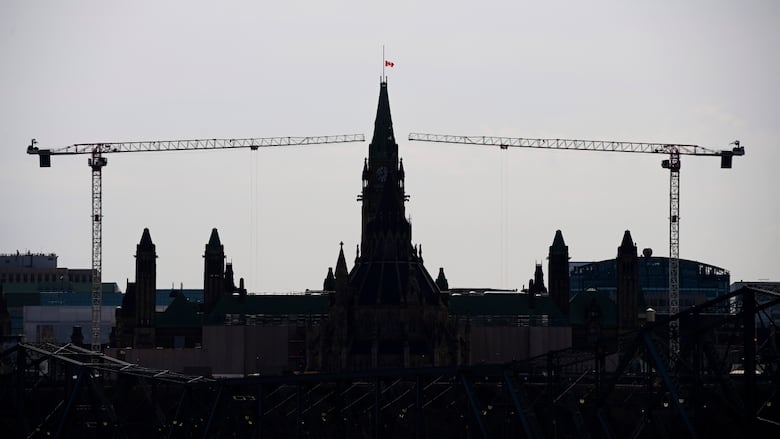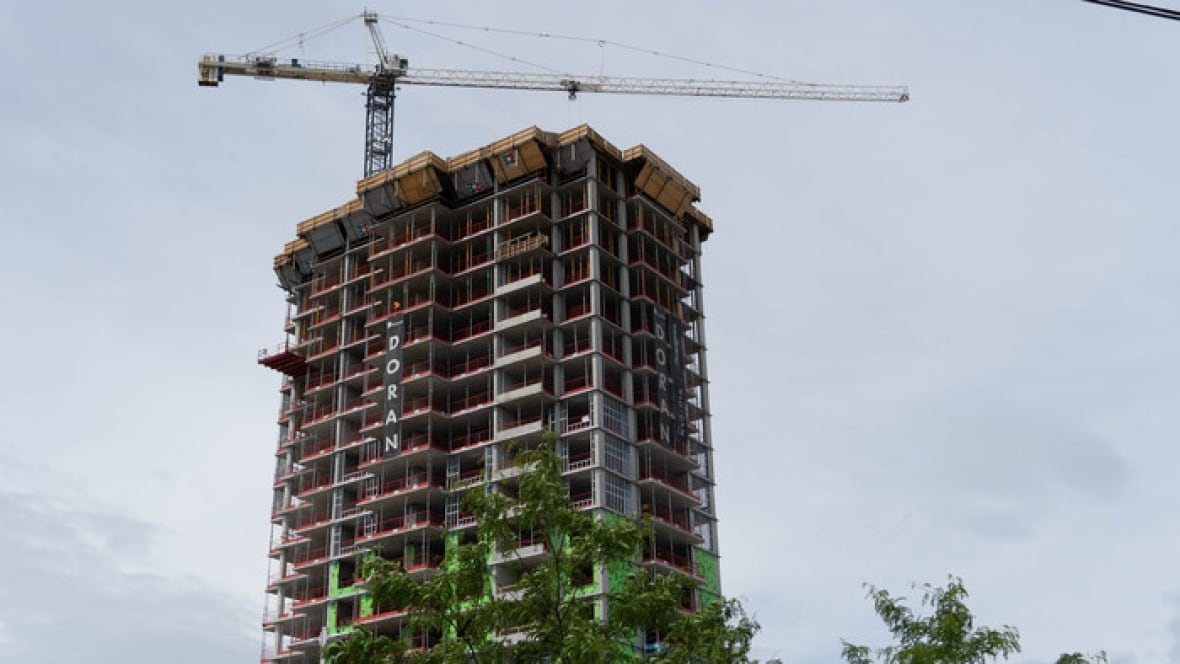Yes, cranes are supposed to spin in the wind like that
During Thursday's storm, some Ottawa residents were concerned to see an unattended tower crane 'weathervaning'

Thursday was a dark and stormy night in Ottawa, and if you looked up you may have noticed a tall construction crane spinning in the wind.
At least three videos posted on social media showed a crane's boom or jib — the horizontal part — swinging dizzily as the storm closed in, unsettling some observers.
But it turns out that's perfectly normal — and required.
André Brisson, founder and president of Objective Engineering and an expert in construction equipment including mobile and tower cranes, gave us the lowdown. His answers have been edited for length and clarity.

Why do unattended cranes sometimes spin in the wind?
It can be quite disconcerting to see the tower cranes whip around in the wind, but that is actually part of the design of the crane — and for safety.
When the the tower crane operator is not at the controls, they actually disconnect the tower crane from the rotation system, which are basically big gears tying things together.
They allow that to freewheel so that the wind can't push the crane around, and that's what they call "weathervaning" or "free-slewing."
If we didn't do that, the wind can actually rip out the the motor gears and collapse the crane because its pressure can exceed the crane's structural limitations, especially in the gusty, warm summer storms we've been getting.

Can the wind really cause a crane to collapse?
If the crane is rigidly tied at the top of the tower and the wind is pushing the boom around, we're actually going to twist the tower. So if that tower twists too far, it can collapse.
The boom, on the other hand, is the same idea. Just like when you use a wrench, the longer the arm, the less force you need to tighten or to break a screw.
That extra load amplifies on the rotation system, which we can twist the tower, or the boom could be pushed so much that that boom collapses.
If we have any part of the tower crane collapsing, it's a catastrophic failure.
So when should we be concerned about a spinning crane?
If the construction site is active, and nine times out of 10 a tower crane is there to lift material, and if you're seeing a trolley go back and forth on the boom and it's lifting up materials, that's the natural course of the day.
If you're starting to see other parts of the crane moving around when the construction site is closed or no one's up there, yeah, possibly [that's cause] to be concerned.
[But] if we're seeing it freewheel and it's moving and it stops, or even it goes around like a [spinning] top, depending on the wind, that's normal.
Is anyone checking to make sure these cranes are safe?
Normally tower cranes are on a project site for two to three years, and on some projects it could be up to eight or nine years, depending on the size of the project.
But keep in mind that these tower cranes are inspected frequently — daily, weekly, monthly, and annually — and that includes a structural inspection.
So the crane might be on site for nine years, but it's being looked at and repaired and maintained to make sure the project can go forward and that the equipment is safe to use.